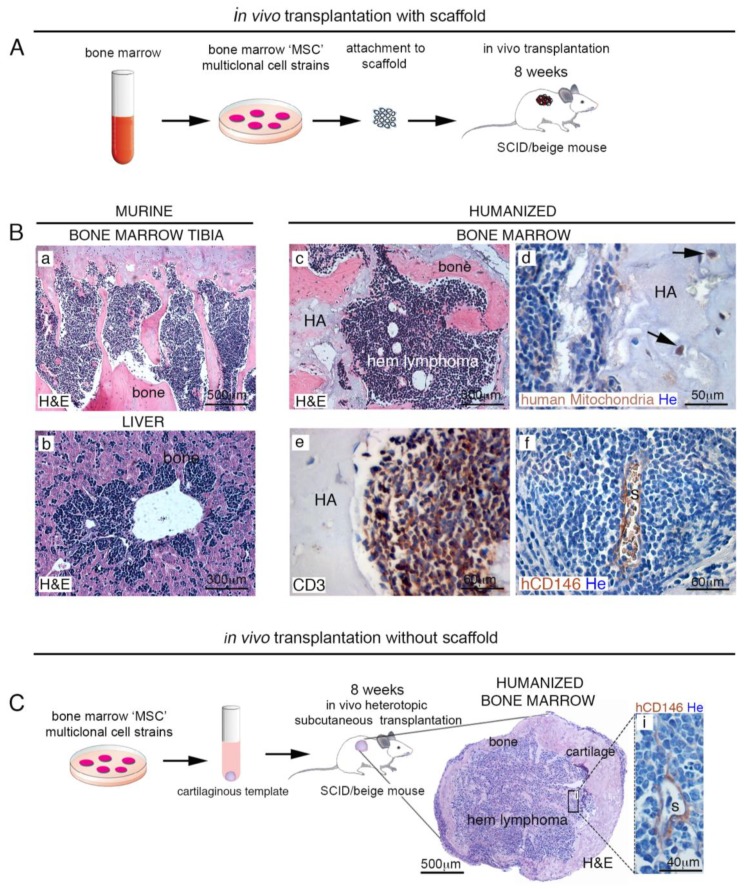Figure 2.
Mouse models for generation of humanized extraskeletal bone/BM ossicles. (A) scheme of in vivo transplantation protocol with scaffold. In this model, ectopic bone/BM organ is generated by hBMSCs expanded in vitro, loaded onto osteoconductive carriers (e.g., using hydroxyapatite/tricalcium phosphate (HA/TCP)) and then transplanted in immunocompromised mice. About eight weeks post-transplantation, hBMSCs form a BM microenvironment. (B) In the experimental time-frame, a small number of SCID mice (~15%) developed spontaneous lymphomas. (a,b). Human hematopoietic supporting stromal cells in humanized bone/BM ossicles create a suitable environment for murine lymphomas metastases (c–f); (C) scheme of in vivo transplantation protocol without scaffold. In this model, cells are grown in culture as unmineralized pellets in chondrogenic differentiation medium and then transplanted into subcutaneous tissues of immunocompromised SCID/beige mice to generate heterotopic skeletal tissues. Eight weeks post-transplantation, hBMSCs develop a BM murine hematopoietic lymphoma-microenvironment. H&E, Hematoxylin/Eosin. HA, hydroxyapatite; hem, hematopoiesis; s, sinusoid. He, Hematoxylin counterstaining. All data shown are representative results derived from one of at least three independent experiments. Scale bars represent 40, 50, 60, 300, 500 μm as indicated.

